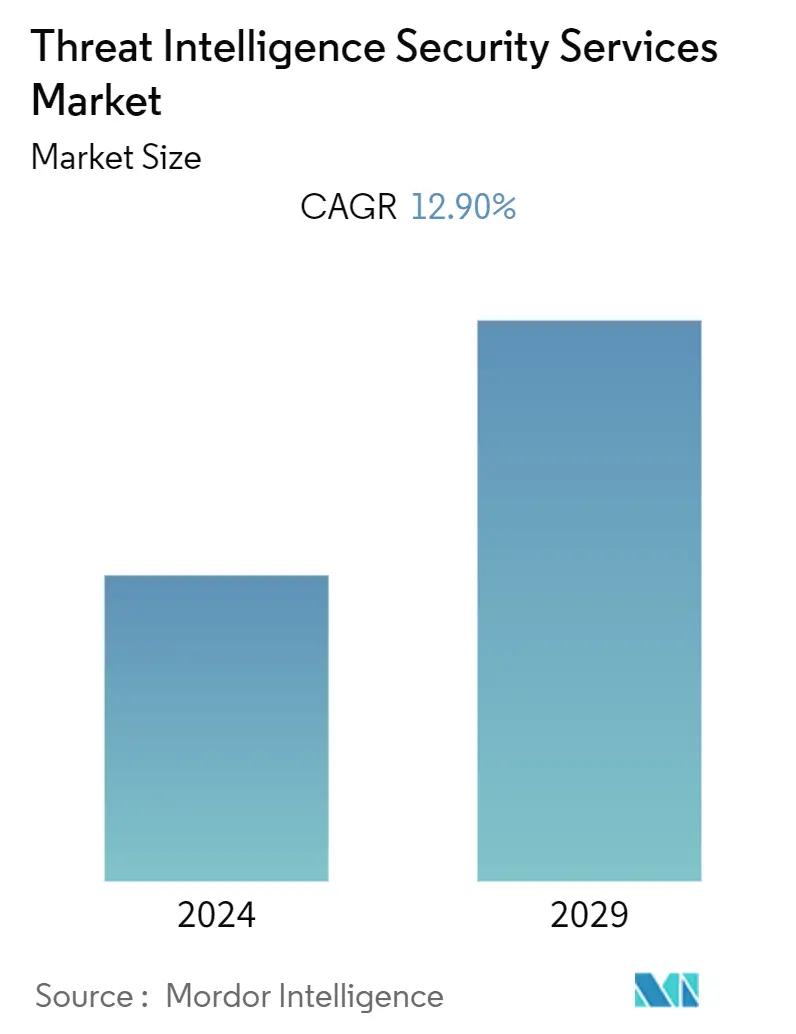Market Size of Threat Intelligence Security Services Industry

| Study Period | 2019 - 2029 |
| Base Year For Estimation | 2023 |
| CAGR (2024 - 2029) | 12.90 % |
| Fastest Growing Market | Asia Pacific |
| Largest Market | North America |
| Market Concentration | Medium |
Major Players
*Disclaimer: Major Players sorted in no particular order |
Need a report that reflects how COVID-19 has impacted this market and its growth?
Threat Intelligence Security Services Market Analysis
The Threat Intelligence Security Services Market is expected to register a CAGR of 12.90% during the forecast period.
The market was valued at USD 1863.48 million in 2020 and is expected to reach USD 3829.77 million by 2026.
Threat intelligence services nurtured out of security service providers evolving their threat detection abilities to address the encounter of detecting advanced persistent threats (APTs), previously unidentified attacks, advanced malware, and other threats. Advanced persistent threats are a new class of malware. However, in reality, advanced persistent threats are a combination of malware, delivery systems (such as phishing), and data exfiltration. Most of the threat attacks are unknown, low-targeted, slow, and adaptive
Cybercrime has existed for many years and has evolved to become a severe problem for individuals, organizations, and hence, the society at large. Global adoption of the Internet and the proliferation of payment-linked online services, which attract profit-oriented criminals, are among the relevant drivers for such motived attacks. For instance, according to the National Crime Agency of the United Kingdom, cybercrime has surpassed all forms of traditional crimes.
The natural sources to quantify crime are police-recorded statistics. In the context of cybercrime, however, some limitations and caveats put police-recorded statistics to doubt. A lack of consensus of what constitutes a cybercrime is one among such. As a missing authoritative definition, some offences may be classified as cyber when in fact they are not, while others may be concealed within other crime statistics. For instance, in Germany, only 64,426 out of an estimated 14.7 million cybercrime incidents (0.4%) made it to the police-recorded statistics in 2013. In the United States, only 8% of identity theft victims stated that they had filed a report.
One of the major causes of the incidences of cyber-attacks is the lack of skilled cyber security personnel. The number of experienced cyber security professionals, especially in Europe, Asia-Pacific, Latin America, and the Middle East, is less compared to the need for security professionals required to handle the cyber threats for financial institutes, government organizations, and private sector/industrial businesses.
Europe, Latin America, and Middle East & Africa have smaller numbers of cyber security workforces. However, there is a high degree of business activities in these regions as well, making them some of the most attractive countries for cyber-attacks; except Europe and North America, cyber laws are not well defined in most regions. Also, most of the professionals working in this region are not experienced enough to deal with the intensity of incoming cyber threats.
